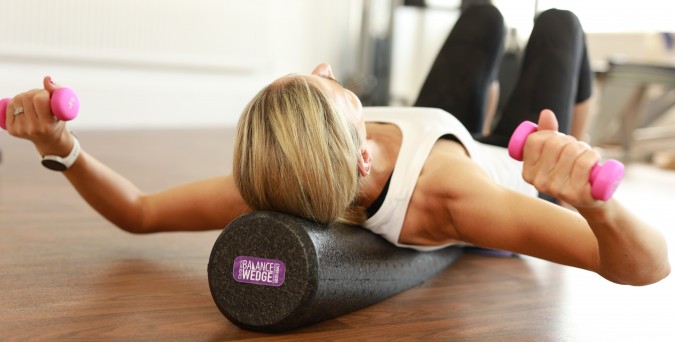


I've long thought that the proliferation of screen-based devices is not going to be good for our bodies.
I have seen an increase in the number of people experiencing neck and shoulder pain and related problems. Talking to GPs at a training event I was invited to speak at, confirmed my belief that more and more people are experiencing problems like these related to our increased use of our mobile phones, tablet computers and laptops.
Our bodies are designed to move. The fact that we are spending ever increasing amounts of time doing more and more things on one device means that not only are we more sedentary as a society, we are becoming more static.
The evolution of our bodies has been driven by changes in our environment over many thousands of years. This historically slow change has given our bodies plenty of time to adapt and change to the environment and to what is required to survive and thrive. However, in the last 50 years we have experienced a dramatic change to our day-to-day and working lives and environments. Our bodies have obviously not been able to keep up with this change.
We are now in a situation where we are asking our bodies, and spines, to do things that they are not designed to do. While we are young and generally flexible our bodies can compensate for this imbalanced use, but the more this carries on, the more established this imbalance becomes and the more the biomechanics of our systems are negatively affected.
I refer to this as a loss of "compensatory capacity" and it is when our systems can no longer compensate for what we are asking of them or they are imbalanced in the way in which we are using them, that we start to develop neck pain, shoulder pain and other disorders (shoulder impingement, rotator cuff tendonopathy and tears etc) and nerve pain to name but a few.
Having spent over 10 years specialising in the assessment, diagnosis and treatment of neck pain, shoulder pain, cervicogenic (neck related) headaches and dizziness and other such upper quadrant problems I believe that unless we start addressing this problem at the source, as a society we are going to be significantly affecting our quality of life in our later years.
One analogy my patients find useful is in that of a set of scales. On the one side of the scales we have movement and postural balance with regular activity. On the other side of the scales we have immobility, sustained static postures which strain our muscles and joints like those caused by long hours on screen based devices.
At the end of each day we need to ask the question, have we balanced our scales? That is, have we balanced the biomechanics of our bodies? If we have had an eight-hour working day in front of the laptop or computer screen then we need to be deliberate about stretching or going for a walk or doing some other activity that gets our bodies moving.
If, however, we have had a day of a lot of movement out in the park with the children or doing many varied activities, the bad side of our scales is not as heavily weighed down and so there is less of a need to balance the scales with corrective activities (stretches, mobilisation exercises etc).
So a good question to ask at the end of each day is: Have I been moving today or sitting in front of the screen. If you've been sitting in front of the screen, go out for a walk - look up at the sky listen to the birds and reintroduce movement into your system. Movement for our systems is like air to our lungs: joints and muscles breathe by movement!
For more about information age syndrome and muscle imbalance and postural dysfunction see our Physio Articles.
Michael O'Reilly
Link: Physio Articles...

The OptiNeck Balance Wedge addresses the fundamental drivers a of wide range of neck, upper back and shoulder conditions.